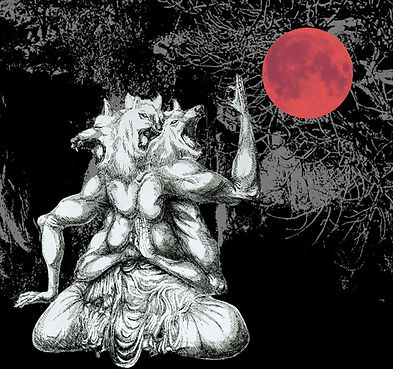Highlights:
Issue 8 - August 2025
Issue 6 Article 4
Wolf pack, one call? The "revival" of the dire wolves
25/6/20
By:
Elijah Chew Ze Feng
Edited:
Lee Zhe Yu, Nathan
Tag:
Biotechnology and Engineering

On the first of October, 2024, a sound that disappeared from the surface of the Earth 10000 years ago was said to be heard again for the first time… in the middle of a lab.
Three babies had been born, delighting the scientists who had watched them since they were foetuses. Some rather poetic researchers named them Remus, Romulus and Khaleesi – allegedly the first “Dire Wolf” pups born ever since they went extinct millennia ago, seemingly revived from the genetic abyss by the wonders of modern science.
Or were they?
Time magazine was quick in its response. Plastered across the front cover of millions of copies was the fluffy white frame of a dire wolf, along with the word “Extinct” crossed out in blood red. The social media furor was incomparable, the internet universe of cute puppy reels suddenly colliding with the world of bioengineering.
Colossal, a company that has previously pledged to work towards the revival of extinct species such as woolly mammoths, has touted their three pups as the beginning of something new – a biological revolution called “de-extinction” with the potential to make one of the two certain things in life somewhat less certain. (Death, not taxes.)
How did they achieve this? The procedure was simple in theory. Colossal began by scanning for the main genetic differences between the extinct dire wolf and their living cousins, the grey wolf, mutations accumulated over millions of years of exposure to different selection pressures and varied niches in the environment. Following this, like many a study involving the creation of clones or modified animals, they took an ovum from a female grey wolf and replaced its nucleus with an edited nucleus (taken from a body cell so that it contains the two copies of DNA present in a fertilised egg), within which they had made the main genetic alterations needed to match a dire wolf’s main characteristics. The edited eggs were then placed inside the womb of a mother wolf to gestate.
Of 40 zygotes implanted, 3 made it to term successfully: the aforementioned Remus, Romulus and Khaleesi. Thanks to the changes made to their DNA, these babies grew much more rapidly, showed much more antagonistic behaviour than a normal puppy would, and sported the pure white coat associated with dire wolves from popular TV shows like “Game of Thrones”.
The problem, of course, is that they were nothing like actual dire wolves.
Our common perception of the dire wolf has been constructed from a few portraits splashed across pop culture and social media feeds. It’s an apex predator, white like the snow, massive, silent and deadly. It’s a wolf 2.0, a bigger (and oddly cuddlier) version of our favourite puppies.
Unfortunately, this couldn’t be further from the truth.
The reality is that the point at which dire wolves diverged from our modern dogs and wolves is much further back than we would typically imagine. The true “dire wolf” is nothing like what we’d imagine an ancient wolf to look like. It is instead more similar to an African Painted Dog in terms of how distantly it’s related to the wolf of today, if that gives you a sense of the evolutionary separation we’re talking about.
What exactly are Remus and co, then?
According to several scientists, the litter isn’t anything close to being the revival of an extinct species. Rather, they’re more just regular grey wolves that have been edited to carry a few traits of dire wolves.
That being said, what Colossal has achieved is already quite the feat: commercialising gene editing and turning it into a relatively accessible technology while furthering our collective knowledge about the dire wolf genome. Where they have fallen short is in scientific communication.
Scientific miscommunication means that the realities of Colossal’s progress are vastly overstated, blowing up their achievement into something far beyond what was actually done. Managing to convince the public that they have de-extincted a dire wolf is good to line the pockets of the company executives by encouraging investment and drumming up hype, but not so good for the scientists who are still working on conservation and accurately portraying facts to the public. After all, if we can simply de-extinct a species, what’s the point in making sure they don’t go extinct in the first place?
In the long run, it’s possible that this is all for a good cause. After all, Colossal did promise that it would deliver de-extinctions of many different ancient species that would give us a better look at the way the past fauna lived. They did, through the process of creating the wolf pups, identify a great deal more genetic data than previously known about dire wolves (though whether this was done accurately is not yet verified; peer review has not yet been conducted.)
Yet, even if they contribute all this to our scientific knowledge, does that justify scientific miscommunication and questionable integrity in reporting their findings? This much, as always, is uncomfortable to give a certain answer to.
___________________________________________________________________
Check out the SBRC from the menu above if you’re interested in getting published with us!
References
Latest News




